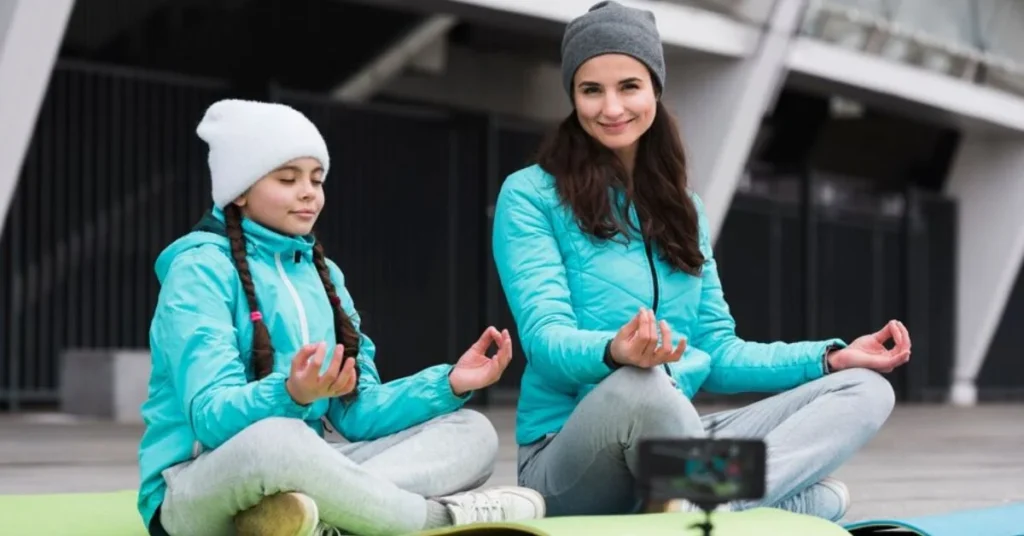Antarvacna offers a unique and deeply introspective method for developing inner awareness in an era where mindfulness and meditation practices are gaining popularity. This practice is rooted in ancient spiritual traditions and focuses on connecting with the subconscious mind through inner reflection. The term translates to “inner speech” or “inner reflection,” the method invites individuals to look within themselves to explore their thoughts and emotions on a profound level. Unlike other mindfulness techniques that emphasize staying in the present moment, this practice encourages deeper introspection, offering a valuable tool for self-growth and understanding.
This article explores the origins, philosophy, benefits, and step-by-step guidance of this method.
The Historical and Cultural Roots of the Practice
This inner reflection originates in ancient spiritual traditions, particularly from the Himalayan region. For centuries, mystics and sages used this technique as part of their journey toward heightened self-awareness. It was an essential tool for those seeking to understand the depths of the mind and soul.
Over time, this method of inner exploration spread to various cultures, blending with other spiritual and meditative traditions. While it has evolved, the core principles of self-awareness and personal reflection have remained intact, helping it stay relevant and meaningful.
What Antarvacna Means: The Concept of Inner Awareness
Definition and Core Philosophy
At its core, this introspective method involves engaging in a deep, reflective dialogue with oneself. Unlike mindfulness techniques that focus on observing the present moment, this approach encourages individuals to look inward, examine their thoughts, and reflect on their emotions. This focus on the subconscious mind helps create a stronger connection with one’s true self, leading to greater self-awareness.
The philosophy behind the practice is simple: true personal growth and understanding come from within. By regularly engaging in inner reflection, individuals can gain insight into their motivations, desires, and fears, facilitating a journey toward deeper self-discovery.
Comparison to Other Mindfulness Techniques
While traditional mindfulness practices focus on staying present and observing external stimuli, this reflective approach turns inward. Rather than simply observing the mind, it involves active engagement with inner thoughts and emotions. This makes it a unique practice, offering deeper insights than other meditation and mindfulness methods, such as yoga or breath-focused exercises.
The Benefits of Practicing Antarvacna in Modern Life
In today’s hectic world, finding time to connect with one’s inner self can offer numerous mental, emotional, and physical benefits. Regularly practicing this method of self-reflection can help individuals find balance in their lives and develop a stronger sense of purpose.

Mental and Emotional Benefits
This practice can significantly reduce stress and anxiety by promoting a calm, reflective mindset. By exploring personal thoughts and feelings, individuals can gain clarity on their emotional state, helping them navigate personal challenges more effectively. Over time, this reflection fosters emotional balance, making it easier to cope with daily stressors.
Physical Health Benefits
In addition to improving mental and emotional well-being, this practice can positively impact physical health. The reduced stress levels that come with inner reflection are often linked to lower blood pressure, better sleep, and overall well-being. This reflective practice fosters a healthier body and mind by fostering inner peace.
How to Practice Antarvacna: A Step-by-Step Guide
Starting this practice doesn’t require special equipment, just a quiet space and a willingness to engage in self-exploration. Here’s a simple guide to help you begin:
- Find a Quiet Space: Choose a location where you won’t be disturbed. The environment should be peaceful and free of distractions.
- Sit Comfortably: Sit in a comfortable position, either on the floor or in a chair, and close your eyes. Focus on your breathing to help center your mind.
- Focus Inward: As you breathe, shift your attention to your inner world. Observe your thoughts and feelings, but don’t judge them—take note.
- Begin Reflecting: Ask yourself gentle questions like, “What am I feeling right now?” or “What thoughts are running through my mind today?” Allow your inner dialogue to guide you.
- Increase Session Length: Start with brief sessions, around 5 to 10 minutes, and gradually increase the duration as you become more comfortable with the practice.
Regularly engaging in this method of inner exploration can deepen self-awareness and lead to more profound personal insights.
Antarvacna vs. Other Mindfulness and Meditation Practices
Unlike other mindfulness methods focusing on staying in the present moment, this reflective approach encourages individuals to explore their thoughts and feelings. Yoga or transcendental meditation, for instance, often emphasizes physical movements or specific techniques to quiet the mind. In contrast, this practice focuses purely on inner exploration and understanding, making it a perfect complement to other mindfulness techniques.
Individuals can achieve a more comprehensive approach to self-awareness and personal growth by integrating this inner dialogue with traditional mindfulness practices.
Real-Life Experiences: How Inner Reflection Changed Lives
Many who have incorporated this reflective method into their lives report profound changes. Some describe how this practice has helped them manage stress more effectively and provided them with clarity on long-standing personal issues. Others share stories of feeling more connected to their inner selves and achieving greater peace in their daily lives.
These personal stories highlight the transformative potential of self-reflection. By dedicating time to this inward focus, individuals can unlock deeper insights and experience meaningful growth in both personal and professional aspects of their lives.
Conclusion
This ancient practice of inner exploration offers more than stress relief; it provides a pathway to deep self-discovery. Fostering a connection with the subconscious mind provides a unique way to gain insight into one’s thoughts, emotions, and motivations. For those seeking to move beyond surface-level mindfulness practices, this introspective method offers a powerful tool for personal transformation.
FAQs:
What is the primary focus of Antarvacna?
The primary focus is on inner reflection and self-dialogue, encouraging individuals to deeply explore their thoughts and emotions.
How does this practice differ from other mindfulness techniques?
Unlike typical mindfulness methods that emphasize the present moment, this approach is introspective and focuses on exploring the subconscious mind.
What are the benefits of engaging in this reflective method?
It offers mental clarity, emotional balance, reduced stress, and can even improve physical health by fostering relaxation and self-awareness.
Can anyone practice this form of self-reflection?
Yes, this practice is accessible to everyone. It requires patience and regular practice but can be done by individuals from all walks of life.
How long should beginners practice daily?
Beginners should start with 5 to 10-minute sessions and gradually increase the duration as they become more comfortable with the practice.

